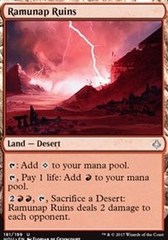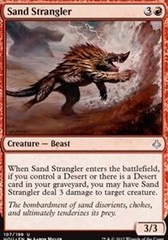How PV won the PT

The dust has settled, the title has been claimed – Paulo Vitor Damo Da Rosa takes home his second Pro Tour title. In doing so, he has stolen the Player of the Year title out from under Marcio Carvalho’s nose, taking the title home to South America for the first time in Magic history.
…But how did he do it?
It certainly didn’t hurt that he’s a spell-slinging planeswalking Hall-of-Famer with a staggering eleven Pro Tour top 8 results under his belt before play started in Kyoto. Paulo tore through the competition on day one, and went into round 12 as the last undefeated player, with a pair of 3-0 draft records. Between UG ramp and UR spells, he cornered two of the strongest draft archetypes, relying on a pair of Hour of Eternity backed up with a Lay Claim for his first sweep, while two copies of Riddleform powered up by a trio of Crash Through brought him the second.

However, you don’t get to take boosters into the elimination rounds, and here it was Paulo’s cunning deckbuilding that propelled him to the top. Ramunap Red was the runaway deck of the tournament, and was a known element long beforehand for all competitors going in. Even with sights set to beat it, the red deck occupied 24.8% of the day 1 field and escorted a massive 73% of these pilots through to day 2. Amongst the red decks there were generally few variations, with most adopting a shell starting at or below 23 lands, and here is where PV found his edge. There is a long adopted adage surrounding mirror matches – ‘In the mirror, you want your deck to be a little bit slower and a little bit bigger’. For anyone who remembers the Atarka Red deck from Magic Origins a few years back, you’ll know that despite the deck being capable of turn four kills, the mirror match tended to end up very grindy, with both players trading resources to vie for board control. When the dust settles, the first player to land a haymaker like Outpost Siege or Goblin Rabblemaster uncontested would run away with the game in the face of an opponent topdecking Dragon Fodders and Foundry Street Denizens.
Much the same principle applies in the red deck mirror today, and Paulo has built his deck to take advantage of this fact:
| Ramunap Red | |
| Paulo Vitor Damo Da Rosa | 1st place, Pro Tour Hour of Devastation |
| Main Deck (60) | |
| Planeswalkers (2): | Land (24): |
| 2 Chandra, Torch of Defiance | 2 Scavenger Grounds |
| 4 Ramunap Ruins | |
| Creature (26): | 14 Mountain |
| 4 Ahn-Crop Crasher | 4 Sunscorched Desert |
| 3 Hazoret the Fervent | |
| 3 Kari Zev, Skyship Raider | |
| 4 Village Messenger | Sideboard (15) |
| 4 Bomat Courier | 2 Chandra, Torch of Defiance |
| 4 Falkenrath Gorger | 2 Pia Nalaar |
| 4 Earthshaker Khenra | 2 Chandra’s Defeat |
| 2 Aethersphere Harvester | |
| Instant (8): | 2 Sand Strangler |
| 4 Abrade | 2 Glorybringer |
| 4 Shock | 1 Oath of Chandra |
While the maindeck here may look much the same as many others, the increased land count makes a subtle difference. In the mirror having a removal spell that sits around as a card advantage engine or otherwise an unblockable source of recurring damage gives a massive edge, especially in the situation where both players settle in for a stalemate with a Hazoret the Fervent each. In addition, Abrade as a maindeck card is something very few players picked up, and what I expect will be a mainstay over the upcoming weeks. With Chandras to fall back on, a tool to defend them shines, as well as giving the deck game against some of the most problematic permanents in the enemy decks – God Pharaoh’s Gift, Verdurous Gearhulk, Winding Constrictor and Aethersphere Harvester. In addition, Abrade provides a cheap way to interact with the Zombie haymakers (Lord of the Accursed and Diregraf Colossus).

The 24th land also gives PV more options out of the sideboard, and importantly comes in the form of a tenth desert for Sand Strangler. Here the 3/3 does a good impression of Flametongue Kavu and plays into the above plan, letting you take out cheaper cards like Village Messenger and create a massive board swing. Chandra’s Defeat brings the removal count up and helps support this transition into a control deck. In the mirrors where you are expecting opposing Chandras to appear, the extra land supports reliably playing a 5-drop in Glorybringer to go one step over the top and threaten the powerful planeswalker.
What is most admirable about this set-up is that PV identified a large portion of the deck’s strength comes from the land base, specifically from the namesake card Ramunap Ruins. The raw power level of the cards in this deck allowing for 1-2-3-4 curves topped with Hazoret or Chandra is great enough that simply being able to hit the first four land drops is often going to win the game regardless of whether you run out of steam after this. On top of that, Ramunap Ruins and Hazoret both allow you to convert spare deserts into two points of damage in the mid- to late-game, negating the usual downside of an increased land count.
Now that Red has become public enemy #1, Zombies and Green-Black decks have surged into the limelight as the premier ways to combat the red menace as proven by the top finishers from the latest MTGO PTQ. Against these decks, PV’s setup with Abrades looks to be the only way for Ramunap to stand the test of time. Have you joined the winning team, or are you gunning for the top spot with a brew of your own?





